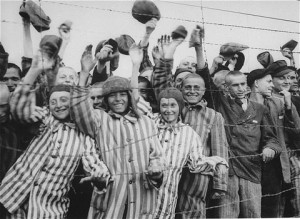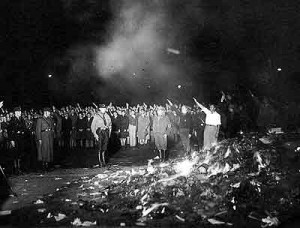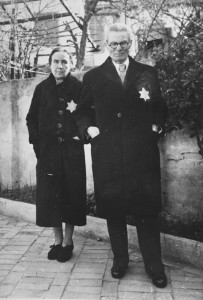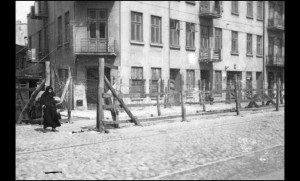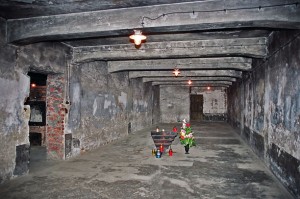In socials 10 I am most proud of my NorthWest Company ad because it was a creative take, on really helping me understand how people migrated from Europe to Canada. I got to come up with a slogan and decide how to try and get a new Voyageur for the company. It got me thinking and it was not that hard to do.
Category Archives: Grade 10
Drug Addiction
This Video made by Jamie, Alyson and I, showcases how you can not tell from the outside how someone is. You do not know anything about others private life.
Shakespeare “Much Ado About Nothing”
Bard in the Classroom Reflection

(In this tableau scene created by my group, Hero is getting married, to someone who unexpected it to be her. There are many others that have just came back from war and are attending the ceremony.)
On January 11th-13th, we had a Bard on the Beach workshop come into our classroom, and do a three-day presentation, that contained lots of activities, and knowledge on Shakespeare. One thing that I really enjoyed about it was that we were not sitting and listening to a lesson the whole time. We were able to stand up and move around to do a variety of different activities. I learned a lot about the play “Much Ado About Nothing” which translates to English as “A lot of fretting about gossip.” Bard on the Beach explained that “Much Ado About Nothing” was about two people that are incredibly mean to each other and always insulting each other, actually love one another. “Much Ado About Nothing” Is a comedy play, written by Shakespeare. The town ends up finding out and tries to let both of them know that the other loves them. It helped me to understand more of Shakespeare’s writing and English skills that he had. My favourite activity that the presenters lead were the tableau scenes, they were fun to create and made us all work together and be creative, (seen in the picture below.) Another thing I learnt was that Shakespeare had 4 different play types Comedy, Tragedy, History, and Romance. Comedy included funny scenes and joke within the script. Tragedy included death, fighting, and most likely sadness. History contained of past events that happened and were historical. Romance was not particularly about love in Shakespeares writing it was more about fantasy and supernatural.
Non-Fiction Advertising Analysis
a.) This ad is for the company “Everlast”. This ad came out in This ad was released in 2011.
b.) This ad is selling the sports brand “Everest” which is intended for boxing.
c.) This ad is portrayed to regular everyday people. Including women, men and kids that enjoy the sport of boxing.
Information Fluency
Website Credibility:
- The last time the webpage was updated
- If there is lots of information
- If there are authors
Works Cited:
I found a Sports Illustrated Magazine http://web.b.ebscohost.com/ehost/command/detail?vid=3&sid=9befca62-6785-4a01-b6ff-82e036c0ab70%40sessionmgr2&bdata=JnNpdGU9ZWhvc3QtbGl2ZQ%3d%3d#jid=SPI&db=aph
EBSCO Database:
School library page logon using your school logon: 132-first.initial.last.name and your school password.
Ebsco logon: riversiderapids
PW:student
Gale PW: student
Session Reflection:
I learned that not all websites are true and not all information is correct. I also learned how to tell if a website is trustworthy. This is good to know because when your doing research you can tell wether it is true or not.
Holocaust Memoir
I am a six-year-old boy named Eli. I used to live in the ghetto Lodz, but had to take a very long journey to get where I am now, Auschwitz. When I travelled here a few months ago my parents explained to me that we had to move so the Germans could have more room. I did not want to depart from my home, my family or my friends. I was really frightened; I did not know what was going to happen. Once I arrived I was split up from both of my parents. My job here at Auschwitz is to collect the belongings of new arriving people. I witness people get whipped repeatedly and shot by the Nazi’s. It is a horrendous sight, and I try to zone out and close my eyes while this happens.
Today is May 4th 1943. I wake up at the crack of dawn, the sun it’s self is now waking up as well. There is no breakfast today, so we continue on with our authoritative routine. I walk in a clump with the other men and women who work the same job as me. I have heard that there are many new prisoners arriving today. I get to my station, things are hurled and flung at me to collect. I collect a jacket from one man and happen to find a piece of white bread in the pocket. I look around at the guards and it seems to be that no one is looking in my direction. I gobble the piece of bread back as fast as I possibly can. All of a sudden, I feel a warm breath on the back of my neck, I stand still with my hands clenched, and eyes squinted tight. A deep voice behind me yells, “What is in your mouth, have you taken something?” I say nothing. The man shouts, “You have haven’t you, number 19,142? Face me stupid Jew.” I turn around, he grabs my wrist and yanks me away from the tables. “You may never, I repeat never steal anything again.” He pulls out his whip. He punches me in the face to get me to the ground and then whips me with full force seven times. He then kicks me in the stomach, signaling for me to get up. He than tells me to go back to work. I run back with my skin burning from the whip and my eye closed shut. I work the rest of the day, choking back my tears.
Application:
The story that I wrote is about a young Jewish boy, who is forced to go to a concentration camp in 1943. He had been split up from both of his parents. He had to work a job of collecting the belongings of new arriving prisoner’s. He then found some food in the pocket of a jacket, he ate it, he thought no one was looking, but he was wrong. He was pulled aside by a guard, and got beat and whipped. During this time of WWii, many people were brutally abused in concentration camps fortheir beliefs or even the way that they looked. No one deserved to be treated this way for their beliefs. Many people died and were killed before liberators came to save them.
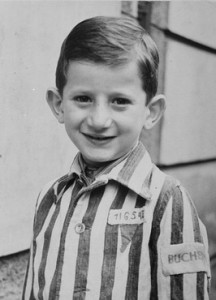
http://www.scrapbookpages.com/Buchenwald/BuchenwaldPhotos/BuchenwaldBoy.jpg
We Remember – Liberation Poem
I wrote the following poem based on the journal entry by Charles V. Ferre, on his experience of liberating a concentration camp during WWII. I took verbs, nouns and adjectives from the poem to determine the tone of the poem. I then wrote my own poem based on these words as a tribute to those men and women who put their lives at risk so that I can live in a country of freedom. My poem is based off of troops that liberated concentration camps during WWII, which housed corpes and remains of countless Jewish souls.
(Jewish men and women are cheering for their freedom during the liberation.)
https://furtherglory.files.wordpress.com/2013/08/steverossdachau.jpg?w=480&h=350
Sporadic gunfire,
Cruel SS soliders tormenting,
Dead bodies lay piled high,
An unimaginable amount.
Ones who are alive,
Starved to near death,
Suffering from tragic beating.
Skeletal people running and pummelling,
Ones who once tortured them.
Trying to get revenge.
A horrendous stench fills the air.
Commanding phone calls,
Our own lives at risk.
We came to save the Jews.
But yet, people still doubt.
“The Cage” Timeline
May 10, 1933 – Burning of books in Berlin and throughout Germany.
History:
On May 10, 1933 the Nazi’s burnt all of the books that were against german beliefs. The Nazi’s did not want any Jews to continue having an education. The Nazi’s burned upward of 25,000 books which they considered un-German. Many German students joined in on this act as well. The Nazi’s and German’s would sing Jewish songs as they burned the books. Not all book burns were held on May 10th many had been postponed for different reasons.
Image:
(Caption): People surrounded by a pile of books being set on fire.
Source: https://s-media-cache-ak0.pinimg.com/originals/79/23/b0/7923b05e58e17864373048e357d30c93.jpg
Application: In the novel “The Cage” Riva and her brothers had to hide their books from the Nazi’s because they could not find out that they had Jewish books. The Nazis did not want any Jews to continue learning. When Riva and her brothers had to move in to the old grocery store they agreed to hide, and form a secret public library there. The setting was described as dark, cold and sad. Riva, Motele and Moishele decided to share the books in secret and share them with their friends and town. When the kids found the books they were scared that they were going to get caught with the books and get in big trouble.
September 1, 1939 – Jews in Germany are forbidden to be outdoors after 8 p.m. in winter and 9 p.m. in summer.
History:
On September 1st 1939 the government enforced a curfew for all Jewish citizens. Jews had to be in doors by eight O’clock pm in the Winter and by 9 O’clock pm in the summer. This restricted Jews from having any social interaction with friends after coming home from work. Many Jewish people were afraid of going out at dark anyway. If the Jewish people were to disobey the curfew than the government would threaten them with death. The mood during this part f the story is very tense and exhilarating.
Image:
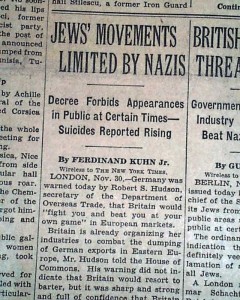
(Caption): A newspaper article talking about how Jews are forbidden to be in public at certain times.
Source: http://images.rarenewspapers.com/ebayimgs/1.40.2014/image031.jpg
Application: While reading our novel “The Cage” I had noticed some of the characters would mention how they were not able to go outside late, or at night. Riva would rush home after going to a friends house or coming home from work. She would be too scared to go outside close to curfew since there were Nazi’s always on patrol. This caused an external conflict between the Nazi’s and the Jews in the ghettos, because the Nazi’s that were in control of Riva’s Polish ghetto would be so strict. Nazi’s would not let any Jewish people have freedom in the ghetto and they would restrain Jews from almost everything.
November 23, 1939 – Yellow stars required to be worn by Polish Jews over age 10.
History: On November 23, 1939, the Nazi Governor General of Poland required for all Jewish people to wear a white badge with the yellow Star of David on their right arm. The Nazi’s forced all Jews to wear this star because it symbolized who they are. If Jews wore the stars then the Nazi’s would be able to tell who is and who is not Jew. If a Jew denied to wear the yellow Star of David then they would have a risk of dying, although if they did wear the star like they were told, then they were more likely to be harassed.
Image:
(Caption): The yellow Star of David sewn on to jackets of jews on the left side.
Source: http://hmd.org.uk/sites/default/files/styles/w540/public/images/datestoremember/275._a_jewish_couple_wearing_the_yellow_star_poses_on_a_street_in_salonika.jpg?itok=gFPbcUBv
Application: In the novel “The Cage” all of the Jewish characters that were over the age of 10 had to wear the yellow Star of David sewn onto them. Almost everyone in the Lodz ghetto had to wear the star. The main character in the book named Riva did not seem to be too irritated by this law. Riva is a very round character and has many sides to her. Riva is usually really brave, and is not scared to stand up for herself and her brothers. Although sometimes she is scared and frightened normally by the Nazi’s; for example when she always tries to be home before curfew so she does not get in trouble.
January 25, 1940 – Nazis choose the town of Oswiecim (Auschwitz) in Poland near Krakow as the site of a new concentration camp.
History:
On January 25, 1940 the SS decided to build a new concentration camp in a town called Oswiecim in Poland. The labour camp was called Auschwitz and was for the Jewish. Jewish people were brutally abused and not treated fairly. The camp was ran by German during world war 2. Prisoners of the camp were most likely to die there, unless they got lucky and were able to escape or let go when the camps were closed.
Image:
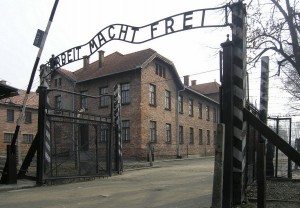
(Caption): The entrance to Auschwitz which reads “work sets you free”.
Source: http://i2.wp.com/nyoobserver.files.wordpress.com/2015/09/auschwitz.jpg?quality=80&strip&ssl=1
Application: The ghetto Lodz which is where the novel we have been reading “The Cage” takes place, is about a three hour drive from the Auschwitz concentration camp. Lots of people who were Jewish in “The Cage” would be taken by train to Auschwitz, like Riva and her brothers; they were taken away to Auschwitz. The characters have a distressful time at the concentration camp. This part of the story is the most exhilarating and is the climax of the story where they get beaten, abused both mentally and physically, and everyone in these camps gets treated terribly. The people who run these camps do not have any sympathy for anyone.
April 30, 1940 – The Lodz Ghetto in occupied Poland is sealed off from the outside world with 230,000 Jews locked inside.
History: On April 30th 1940, the Lodz Ghetto was shut out from the outside world by the government. The Lodz Ghetto was one of the largest ghettos in Europe. The city had a population of over 230,000 Jewish people. The ghetto was sealed off from the rest of the world and the people within it were not allowed to leave. Nazi’s patrolled the camp all day and all night.
Image:
(Caption): The fence of the Jewish ghetto that separates the Lodz ghetto from the outside world.
Source: http://www.theholocaustexplained.org/public/cms/70/92/129/131/uYTDiu_web.jpg
Application: In our novel “the Cage” which takes place in Poland as well as the ghetto, Lodz; the characters in the first part of the story are stuck inside of the Lodz ghetto. The characters are constantly wondering what is outside of the ghetto, or if there is anything outside of the ghetto. The Lodz ghetto was very poor, there was not much food for anyone. Riva and her family would live off slices of bread. Riva’s family got their oven and blankets taken away so they could not be warm, they were stuck in their tiny house freezing cold. Every Jew in the ghetto was scared and fought for their life everyday. No one wanted to be taken away by the Nazis. Nobody knew where the Nazis would take their family and friends.
June 30, 1942 – At Auschwitz, a second gas chamber, Bunker II (the white farmhouse), is made operational at Birkenau due to the number of Jews arriving.
History: On June 30th 1942 a second gas chamber was built (Bunker II) because of how many jews were arriving at Auschwitz. Gas chambers were used to kill mass number of people at the same time. They Nazi’s would release a toxic gas that clogged the lungs of people so they could not breathe. They would kill everyone in the chamber and then burn the bodies.
Image:
(Caption): Inside of a gas chamber from Auschwitz.
Source: http://www.scrapbookpages.com/AuschwitzScrapbook/Photos2005/Krema1gaschamber.jpg
Application: When Riva from “The Cage” gets to Auschwitz she points out black smoke and long skinny buildings. She sees the buildings where the Nazi’s are killing people inside with a poisonous gas. The black smoke is the bodies being burned. Riva can see the smoke from her bunker. The smoke is black and heavy. The mood of this part of the story is suspenseful, anxious and fearful, I wanted to know what was going to happen and what they were doing inside of the buildings. Riva was very scared and nervous at this point of the story, she didn’t know what was happening and she was wondering if that was where her mom ended up. I myself was frightened for her while reading along.
Career Compass
In Planning 10 we have been working on a power point that showcases are future careers. I chose an Anesthesiologist.

